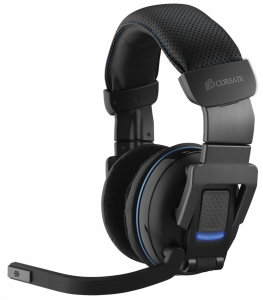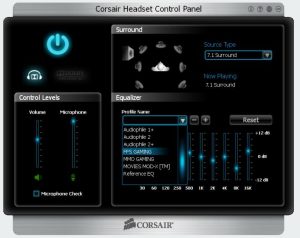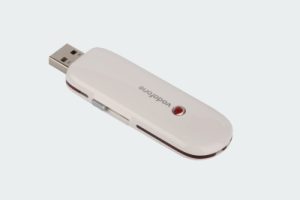Since many years, as soon as I was installing Realtek Drivers for my audio chipset on my PC, I had crackling sounds in my center speaker (only) when the PC was starting/stopping to play a sound (I use the Analog plugs). I had no such issue with the native Microsoft Drivers. I finally spent a few hours during those last days to try ALL the settings and found a trick to get rid of that issue : Enable the “Stereo Mix” feature of Realtek and mute it.
Click to Read More
As said above, I had no issue at all (even with volume very high) when playing sounds on my PC if I was using the native drives installed with Windows.
My Motherboard is an Asus P9X79 pro with a Realtek audio chipset.
As I had no such issue with my HTPC Acer Idea 510 (which also comes with a chipset Realtek), I wrote to Asus to get help on that issue (instead of contacting Realtek). They answered (as they always did for others requests I had in the past) that :
In this case it’s advisable to test the system with a different speaker set.
The Realtek driver utilizes the full potential of the audio card.
As a result it might be sending different types of signals that might nog be compatible/supported by the speakers resulting in a crackling sound.
I was using initially a Surround EAX System: the Inspire 6.1 from Creative. So, I did replace it with my Surround THX System, a Gigaworks G550W from Creative, that was in use without any issue on my HTPC. But the crackling sound didn’t disappear.
I read tips and tricks on probably more that 20 forum (not exaggerating) such as helpdeskgeek which was the most interesting. But without more success.
So, I decided to test ALL the possible settings and combination during hours and hours… And I think I finally found a solution. Don’t ask why it works but it does the trick 😀
Here is the configuration of my Speakers. Nothing here is important as the trick is not at that level, but I publish it anyway:
- As far as the RealTek Drivers are installed, I use the HD Realtek Audio Manager to configure the speakers.
- I have only a 5.1 system…
- The cable of the Front Speakers is in the “Front” plug (seems obvious I presume)
- The cable for the subwoofer and Center Speaker is in the “Ctr Bass” plug
- I wanted to use the remaining speakers as rear speakers, But they don’t produce any sound if connected to the “Rear Spk” plug (whatever configuration I use : 5.1, 7.1, etc.. etc…) I had to plug them in the “Side Spk” plug. I presume the rear plug may only be used with 7.1 speaker systems.
- However, I configured the speakers as a 7.1 system and unchecked the “rear pair” and as a result, I get sound from the rear speakers too. Concretely, when my PC play a sound for the side or the rear speakers, they both play in the speakers connected to the “Side Spk” plug
- I am using Sound Effects, Room Correction and DTS Connect. But they don’t cause or stop the the crackling sound.
Easy way to reproduce the problem:
- Open the Windows “Sound” panel:
- Right click the “Windows Speaker” in the systray (not the “Realtek Speaker”)
- Select “Playback Device”
- Select the “Speakers” currently used as “Default Device” in the “Playback” tab
- Click “Properties” to open to the “Speakers Properties” window
- Now, click on the “Sound” window which is behind the “Speakers Properties” windows. As this last one is a modal dialog, you may not access the “Sound” window ans Windows plays a “beep”. In addition to the “beep” you ear an horrible crackling sound…
The trick:
- Back to the “Sound” window you just open to reproduce the problem, go to the Recording tab
- Select and Enable the “Stereo Mix”
- Click “Properties” to access the “Stereo Mix Properties” window
- In the “Listen” tab,
- Check the option “Listen to this device”
- Select “Speakers (Realtek High Definition Audio)” in the list bellow that option
- In the “Levels” tab, mute the speaker. This is important otherwise you will have “feedback”, which is not at all the purpose (It’s useful to capture some audio output as explained on HowToGeek)
- “Apply” if the button is enabled
Now, reproduce the problem again. If the “Stereo Mix Properties” window is till open, simply click on the “Sound” window which is behind… You have a clear “beep” ? Gotcha !!!
Notice: I have not disabled ANY Playback device or Recording Device, such as the “Line In”, etc…
There is however a serious drawback. When “Stereo Mix” is enabled on “Speakers (Realtek High Definition Audio)”, the desktop takes more than 30 seconds to be accessible (On Windows 8, the Start Screen appears immediately. The problem will only be experienced if one switch to the Destkop quick after the login). It seems to me that Windows Audio Service has difficulties (?) to start or wait on another service. The Windows Speaker appears disabled in the systray for 1 or 2 minutes before finally becoming enabled. It’s not blocking me as I don’t often reboot. Instead, I use the “Sleep” mode. I guess that the Audio Service actually wait on the Realtek Speakers/Drivers to be ready as this issue does no occur if one enables “Stereo Mix” on other speakers… People not switching immediately between the Start Screen and the Destkop won’t notice the issue.
Edit: 21/09/2014 I finally found the perfect solution:
Click to Read More
NB.: Many other Asustek’s users are reporting issues when connecting the Surround Speaker Pair on the Rear Speaker Jack in a “5.1 setup”. They don’t have any sound coming out of those Speakers.
I read that using “Side Speakers” is the technically correct setting for 5.1. Unfortunately, connecting my Speakers in the “Side” connector with a 5.1 config never worked.
As explained above, my trick was to plug my Rear Speakers as Side Speakers instead, and use a 7.1 config with rear speakers disabled… It works for playing 5.1 movies with MPC-HC or Windows Media Center for example, but not when using Plex Home Theater 🙁
I finally found a solution as explained here…
I can now play 5.1 movies with a 5.1 config (instead of 7.1) and get sound via the Side Speakers. And icing on the cake, I don’t ear the crackling noise anymore, even without the trick presented above 😛
![]()


